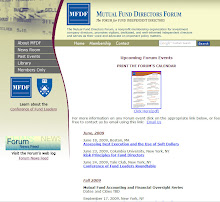To provide some context, the panel also used the same valuation techniques to analyze three large transactions made by private investors during the same time period, finding that, unlike Treasury, private investors received securities worth as much or more than they invested.
- In the eight deals made under the Capital Purchase Program—which is the program designed for so-called healthy banks—Treasury received $78 for every $100 spent.
- In the two deals made under the programs designed to provide aid to important financial institutions that pose a higher risk of failure, Treasury spent $100 to get back assets worth only $41.
The report does acknowledge that "Treasury may have had valid policy reasons for making these transactions, and that it is possible that the value of the investments may eventually be worth more than the amount Treasury paid—or they may be worth much less. The report does not take a position on whether Treasury pursued the correct strategy, instead focusing on the contrast between the quantitative results of the study and the statements made by Secretary Paulson last year."
In addition, the February report also provides an update on the Panel’s previous work, and a review of the key actions and changes at Treasury since the Panel’s last report.
The full text of the Panel's latest report is available at: http://cop.senate.gov/documents/cop-020609-report.pdfhttp://cop.senate.gov/documents/cop-020609-report.pdf





